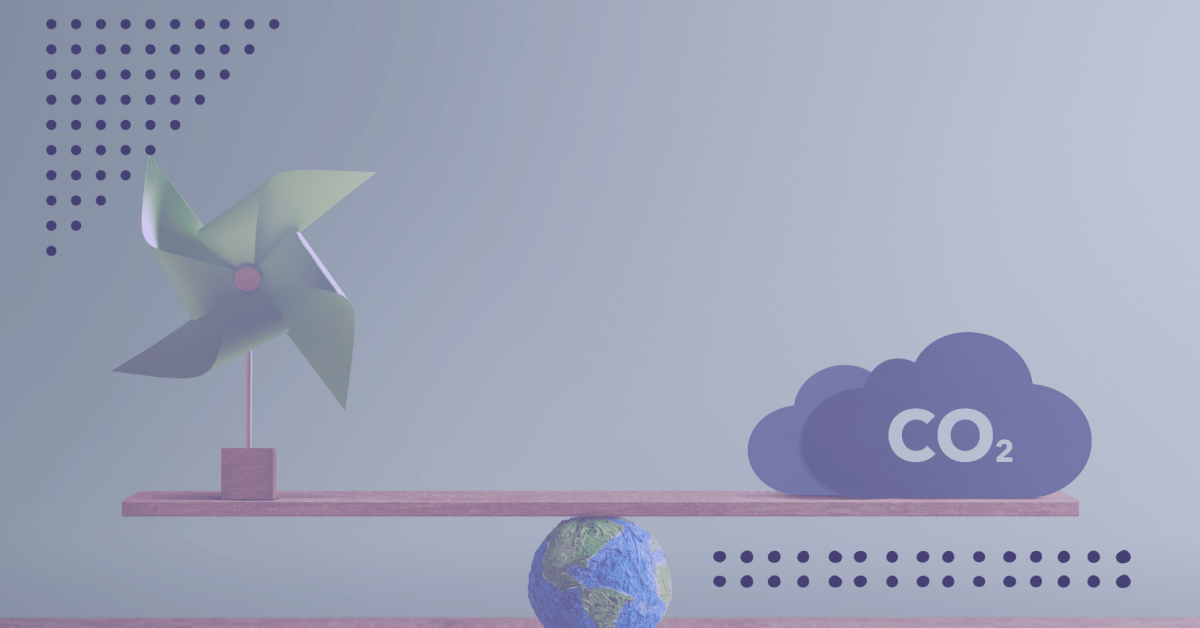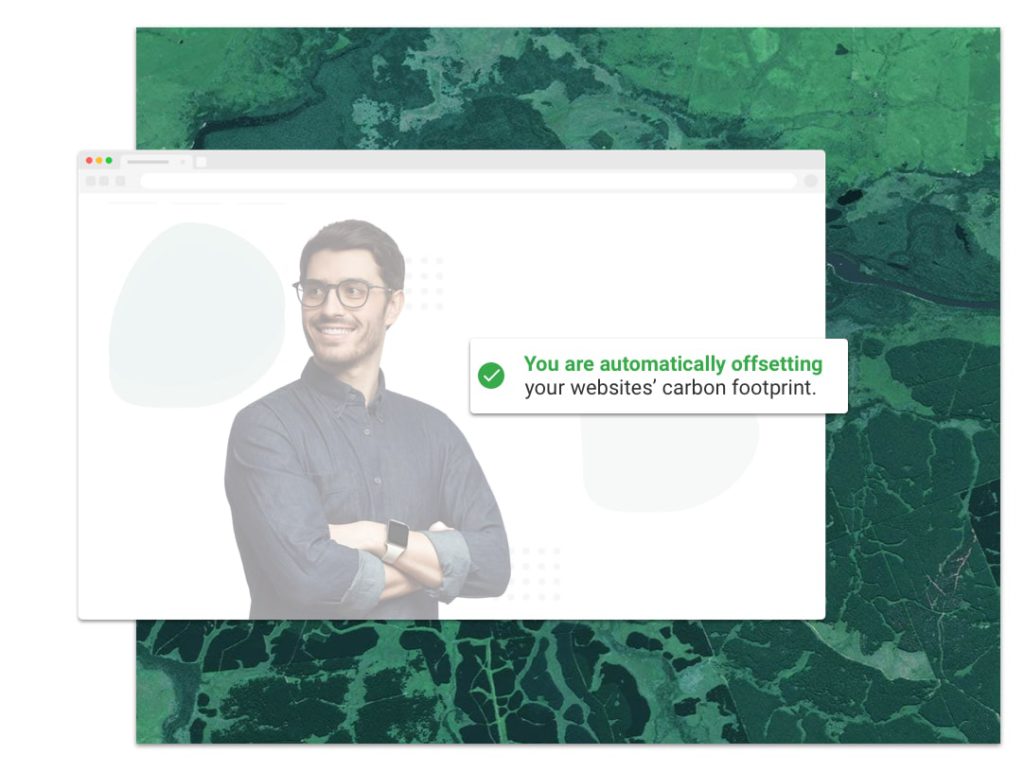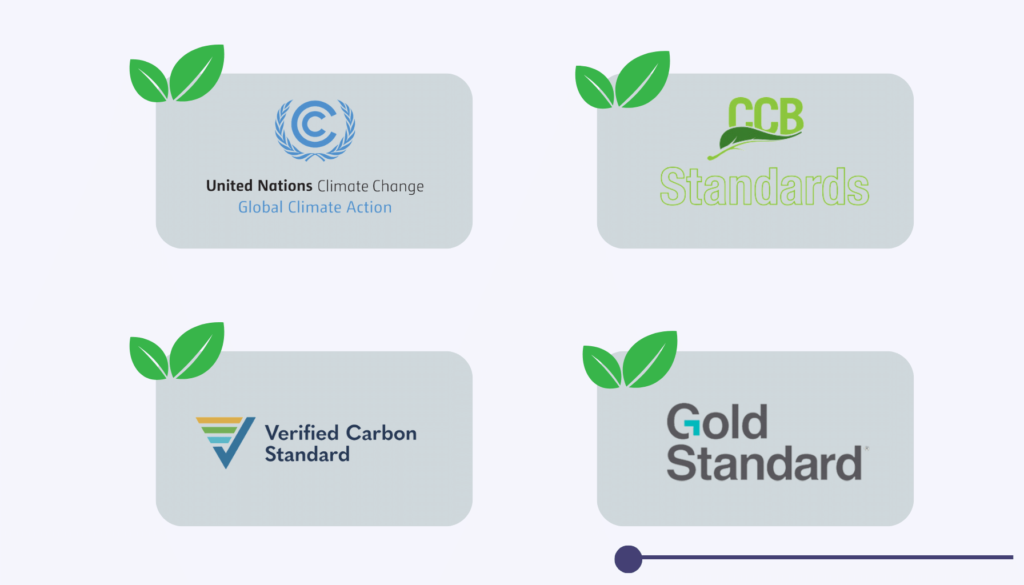
As companies continue to face pressure to reduce their carbon emissions and address their impact on the environment, many are turning to carbon offset programs as a solution. Carbon offset programs provide a way for companies to mitigate their emissions by investing in projects that reduce greenhouse gases, such as renewable energy or reforestation.
However, it’s important to note that carbon offset programs vary in terms of their effectiveness and credibility, which means that companies need to carefully evaluate their options to ensure that their investments make a meaningful impact.
We’ll take a closer look at how to select the best carbon offset program for your business, some of the best carbon offset programs for companies to consider, their pros and cons, and which companies have joined them.
How to Choose the Best Carbon Offset Program for Your Company
When it comes to selecting a carbon offset program, companies should carefully evaluate their options to ensure that they choose a reputable and effective program that aligns with their goals and values.
Here are some factors to consider when making a decision:
- Specific Projects Available: Different carbon offset programs invest in different types of projects, such as renewable energy, forestry, or energy efficiency. Companies should consider the specific projects available through each program and whether they align with their sustainability goals and priorities.
- Certification Process: Look for programs that have a rigorous and transparent certification process. This ensures that the projects are genuinely reducing emissions and that the carbon credits generated are accurately calculated and verified. The certification process should be independently audited and meet international standards.
- Credibility and Effectiveness: Companies should choose a carbon offset program with a good reputation for credibility and effectiveness. Look for programs that are recognized by reputable third-party organizations, such as the United Nations, and that have a track record of successfully reducing emissions.
- Additionality: Additionality is an important factor to consider when evaluating carbon offset programs. This refers to whether the projects would have happened without the funding from the carbon credits. Programs that prioritize additionality ensure that the carbon credits generated truly represent emissions reductions that would not have happened otherwise.
- Price: The cost of carbon credits can vary widely between programs. You should consider the price of the credits and whether they fit within their budget, while also ensuring that they are not sacrificing quality for a lower price.
- Values and Priorities: Ultimately, the choice of a carbon offset program should align with a company’s values and priorities. Some programs may prioritize social and environmental co-benefits, such as supporting local communities or protecting biodiversity. You should consider which co-benefits are important to the company and look for programs that align with those values.
Automatically Make Your Website Carbon Neutral
Pathmonk Climate automatically offsets your emissions through high-quality climate projects, while analyzing and calculating your website’s carbon footprint. Showcase your climate actions with your zero-emission website certificate.

The Gold Standard
The Gold Standard is a carbon offset program that was established in 2003 by the World Wildlife Fund (WWF) and other non-profit organizations. It is a widely recognized and reputable program that has certified over 1,600 projects in over 80 countries, generating over 100 million carbon credits.
How is The Gold Standard Certification Process?
The Gold Standard has a rigorous certification process that includes both a technical review and stakeholder consultation. Projects must meet strict criteria for additionality, sustainability, and impact, and must demonstrate that emissions reductions are real, measurable, and verifiable. The certification process is third-party verified and audited.
Pros and Cons of The Gold Standard
One of the main benefits of The Gold Standard is its reputation for credibility and effectiveness. The program prioritizes environmental and social co-benefits, such as promoting sustainable development, supporting local communities, and protecting biodiversity. Another advantage is that it offers a wide range of project types, including renewable energy, energy efficiency, forestry, and agriculture.
However, one potential drawback of The Gold Standard is that it can be more expensive than other carbon offset programs, and some critics argue that it is too focused on renewable energy projects. Additionally, the certification process can be lengthy and complex, which may deter some companies from participating.
Companies That Have Joined The Gold Standard
Many well-known companies have joined The Gold Standard program, including Microsoft, Sony, and Nestle. Microsoft has committed to becoming carbon negative by 2030 and has invested in several Gold Standard projects, including a wind power project in India and a forestry project in Brazil.
Sony has also invested in Gold Standard projects, such as a biogas project in Thailand and a solar power project in South Africa. Nestle has committed to achieving net-zero emissions by 2050 and has supported several Gold Standard projects, such as a renewable energy project in Panama and a clean cookstove project in Kenya.
Verified Carbon Standard (VCS)
The Verified Carbon Standard (VCS) is one of the largest and most widely used carbon offset programs in the world. It was established in 2006 and has certified over 1,600 projects in over 80 countries, generating over 200 million carbon credits.
How is the VCS Certification Process?
The VCS has a rigorous certification process that includes technical review, stakeholder consultation, and third-party verification. Projects must demonstrate that emissions reductions are real, measurable, permanent, and additional to business-as-usual practices. The VCS also requires projects to meet strict criteria for environmental and social integrity, such as avoiding negative impacts on biodiversity and supporting the rights of local communities.
Pros and Cons of the VCS
One of the main benefits of the VCS is its flexibility and scalability. The program offers a wide range of project types, including renewable energy, energy efficiency, forestry, and agriculture. It also allows for the creation of custom project methodologies to address unique challenges or circumstances. Additionally, the VCS is widely recognized and accepted by governments, businesses, and civil society organizations.
However, one potential drawback of the VCS is that it can be less stringent in its certification process than some other carbon offset programs. Additionally, the program does not prioritize environmental and social co-benefits to the same extent as programs like The Gold Standard.
Companies That Have Joined the VCS
Many well-known companies have joined the VCS program, including General Motors, Coca-Cola, and Shell. General Motors has committed to becoming carbon neutral by 2040 and has supported several VCS projects, such as a renewable energy project in Michigan and a forest conservation project in Brazil. Coca-Cola has committed to reducing its carbon footprint and has invested in VCS projects, such as a biogas project in Kenya and a renewable energy project in India. Shell has committed to becoming a net-zero emissions energy company by 2050 and has supported several VCS projects, such as a carbon capture and storage project in Canada and a renewable energy project in Indonesia.

Climate, Community, and Biodiversity Standards (CCBS)
The Climate, Community, and Biodiversity Standards (CCBS) were developed by a group of NGOs and have been widely adopted by governments, corporations, and conservation organizations. The CCBS is designed to promote projects that address climate change while also supporting biodiversity conservation and community development.
How is the CCBS Certification process?
The CCBS has a comprehensive certification process that includes assessing the project’s climate change benefits, impacts on biodiversity, and benefits to local communities. The program also requires the involvement of stakeholders, including local communities and indigenous peoples, throughout the project cycle.
Pros and Cons of the CCBS
One of the main benefits of the CCBS is its focus on social and environmental co-benefits. The program requires that projects not only reduce greenhouse gas emissions but also contribute to biodiversity conservation and support the well-being of local communities. Additionally, the CCBS has a strong focus on stakeholder engagement and community involvement, which can help build trust and support for the project.
However, one potential drawback of the CCBS is that it can be more complex and time-consuming to certify projects than other carbon offset programs. Additionally, the program’s focus on social and environmental co-benefits may mean that some projects that prioritize emissions reductions may not meet the program’s requirements.
Companies That Have Joined the CCBS Program
Several companies have joined the CCBS program, including Microsoft and Starbucks. Microsoft has committed to becoming carbon negative by 2030 and has supported several CCBS projects, such as a forest conservation project in Brazil and a renewable energy project in India. Starbucks has committed to carbon neutrality and has supported several CCBS projects, such as a sustainable agriculture project in Costa Rica.
Clean Development Mechanism (CDM)
The Clean Development Mechanism (CDM) is a carbon offset program created under the United Nations Framework Convention on Climate Change (UNFCCC). The CDM allows projects in developing countries to earn Certified Emission Reduction (CER) credits for reducing greenhouse gas emissions.
How is the CDM Certification Process?
The CDM has a rigorous certification process that includes assessing the project’s baseline emissions, calculating the emissions reductions, and verifying that the reductions are real, measurable, and permanent. The program also requires the involvement of stakeholders, including local communities and NGOs, in the project development and implementation process.
Pros and Cons of the CDM
One of the main benefits of the CDM is that it can provide a significant source of funding for clean energy and other sustainable development projects in developing countries. The program has also been credited with helping to stimulate investment in renewable energy and energy efficiency projects in developing countries. Additionally, the CDM has a robust certification process that ensures that projects meet rigorous environmental and social standards.
The CDM, however, has faced criticism for its slow and bureaucratic process, as well as concerns about the additionality of some projects. Additionally, the program’s focus on emissions reductions may mean that projects do not always prioritize social and environmental co-benefits.
Companies That Have Joined the CDM Program
Several companies have joined the CDM program, including Nestle, Volkswagen, and PepsiCo. Nestle has supported several CDM projects, such as a biomass energy project in Brazil and a wind power project in Turkey. Volkswagen has invested in several CDM projects, including a landfill gas project in China and a hydroelectric power project in Brazil. PepsiCo has supported several CDM projects, such as a wind power project in Turkey and a biomass energy project in Thailand.
Conclusion
When selecting a carbon offset program, you should consider the specific projects available, the certification process, and the program’s overall reputation for credibility and effectiveness. Ultimately, the most effective carbon offset program for a company will depend on its specific goals, priorities, and values. But did you know that you can start by offsetting your website’s carbon footprint?
Most companies don’t know that their website pollutes too. So before you start applying for these long, bureaucratic programs, and dropping out before finishing the process, start small. Neutralize one of the most significant sources of your digital carbon footprint with Pathmonk Climate and make a positive impact.
Automatically Make Your Website Carbon Neutral
Pathmonk Climate automatically offsets your emissions through high-quality climate projects, while analyzing and calculating your website’s carbon footprint. Showcase your climate actions with your zero-emission website certificate.









